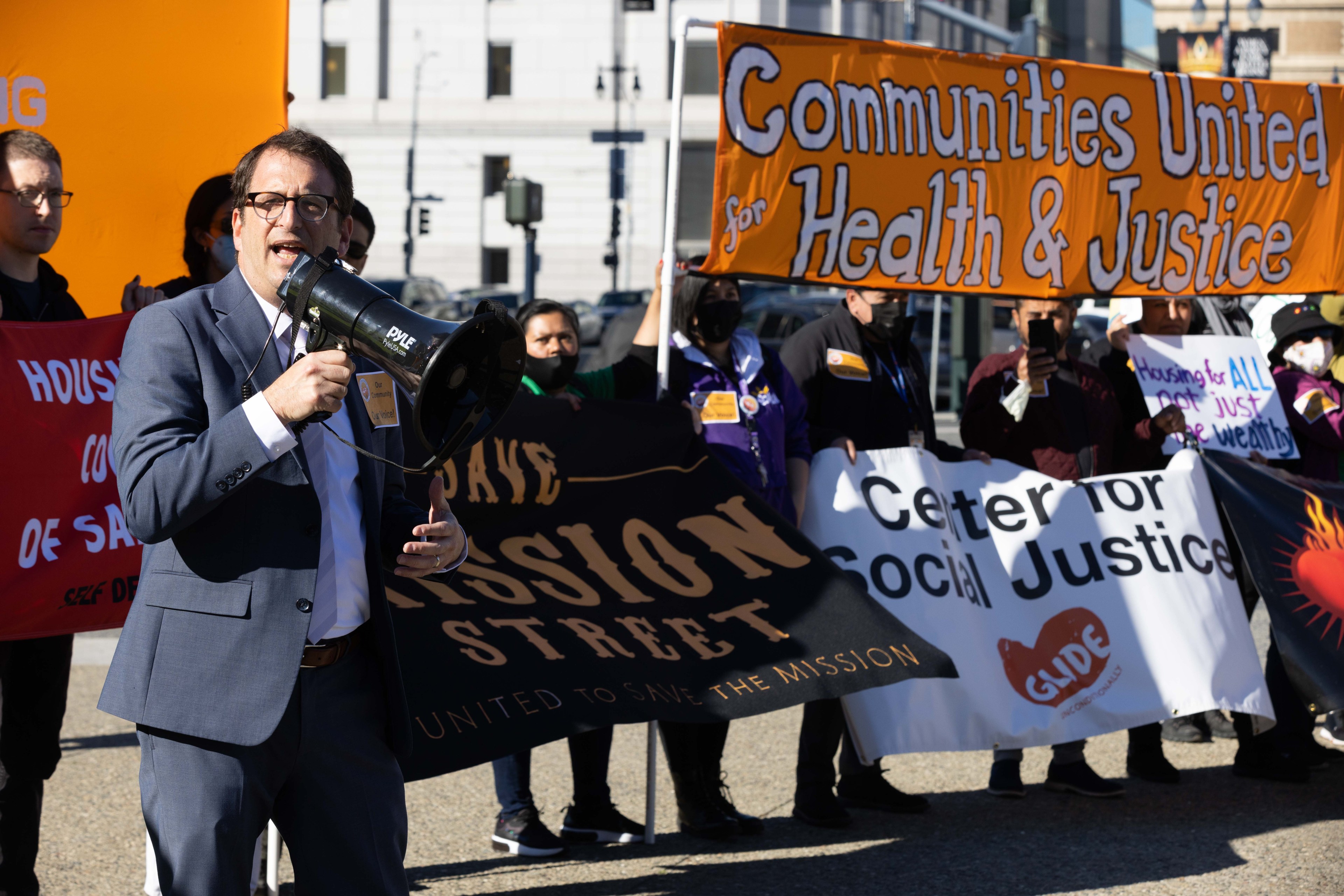San Francisco supervisors had strong words for the city’s planning staff on Tuesday as they scrutinized a rezoning proposal that would allow 35,000 more units in a bid to meet state-set housing goals.
Tuesday’s hearing marked the first discussion by the full Board of Supervisors on the plan, called the Housing Element, which the city must redraft every eight years.
This planning cycle comes with a tall order: Figuring out how to build 82,000 new units by 2031. That’s nearly three times the number of units the city needed to plan for in its last Housing Element.
And the penalties are harsher, too.
If the city fails to pass a plan the state is happy with by Jan. 31, something called the “builder’s remedy” will kick in and wrest the city’s housing-related zoning control from San Francisco officials.
And now that Propositions D and E—which activists from the city’s YIMBY and progressive wings hoped would speed up affordable housing approvals—both failed at the ballot box, San Francisco is missing a tool that could have gotten projects off the ground faster.
But what haunted city leaders on Tuesday was whether any of the planned units—affordable or otherwise—would ever materialize.
“Even if market conditions were ideal, our process is not hospitable,” Supervisor Catherine Stefani said. “I almost feel like the Housing Element is an exercise in futility.”
Supervisor Dean Preston called on the city to come up with a serious land acquisition strategy and sustainable funding for affordable housing, starting with the money raised from Proposition I.
“I think we’re on a path—not to be dramatic—to just fail on that,” Preston said. “This is the place where we can really drive policy.”
Meanwhile, Supervisor Gordon Mar said he wants the city to look at Downtown office conversions, which are fully allowed but haven’t been feasible thus far, while supervisors Hillary Ronen and Connie Chan called on the state to support San Francisco financially as it takes on the rezoning.
“I want the state to both give us money and hold us accountable,” Ronen said.
Ahead of the meeting, affordable housing activists, joined by Preston and Chan, rallied outside City Hall, calling on local leaders to prioritize affordable housing over market-rate in the coming eight-year cycle—especially after the city failed to hit its affordable housing goals last cycle.
Preston and others, including John Avalos of the Council of Community Housing Organizations, want the city to acquire land and dedicate more of its budget to constructing housing that’s affordable to people making less than half of the median income in the city. They fear a repeat of the redevelopment that decimated the city’s Black population in the Fillmore District in the 1960s and ’70s as the city plans to upzone much of the city’s westside.
“We do not need more big, market-rate housing,” Amalia Macias-Laventure, of the West Side Tenants Association, told the crowd. “We need deeply affordable housing. [...] The problem is not a lack of homes; it’s that nobody can afford them.”
The Planning Commission will take up the proposal at a meeting this Thursday before seeking state approval in December and full adoption come January.
